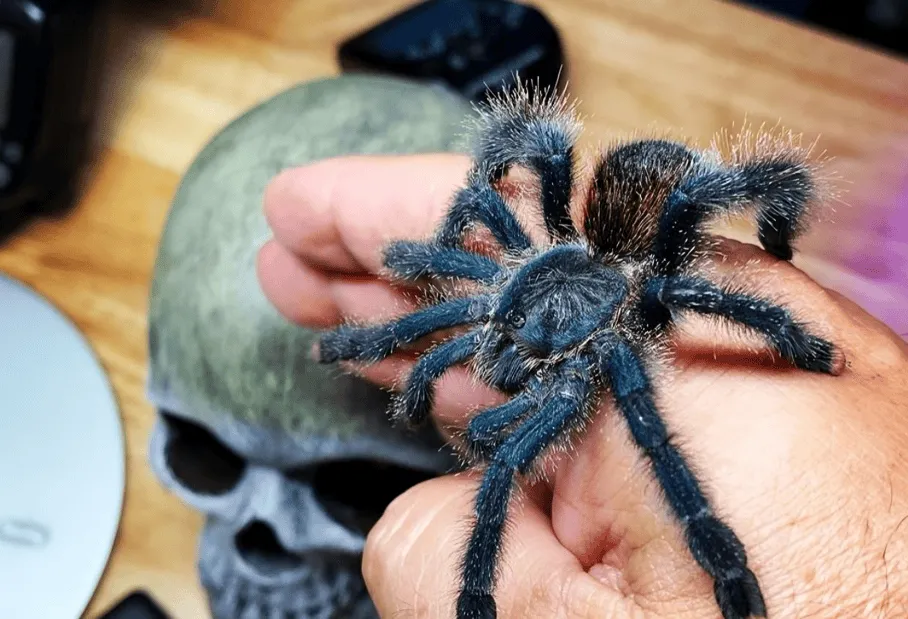The Pink Toe Tarantula (Caribena versicolor), a beautiful arboreal species native to the Caribbean, is a popular choice for both novice and experienced tarantula keepers. Known for their striking appearance and relatively docile temperament, these spiders can be a rewarding pet. However, like any animal, they require specific care to thrive. This comprehensive guide provides all the information you need to successfully care for your Pink Toe Tarantula, ensuring its health and longevity.
Understanding Your Pink Toe Tarantula
Before acquiring a Pink Toe Tarantula, it’s crucial to understand their natural habitat and behaviors. In the wild, these tarantulas live in trees, constructing silk retreats amongst the branches. They are primarily nocturnal hunters, ambushing their prey. This arboreal lifestyle dictates their needs in captivity, particularly regarding enclosure setup and environmental conditions. They are known for their vibrant colors, ranging from iridescent blue and green hues as juveniles to the more muted pink and gray tones of adults. Understanding their origin and behavior helps you create an appropriate habitat.
Habitat Essentials
Creating a suitable habitat is the cornerstone of Pink Toe Tarantula care. A well-designed enclosure replicates their natural environment, minimizing stress and promoting healthy behaviors. Key components include the enclosure itself, substrate, decorations, and the maintenance of optimal temperature and humidity levels. Neglecting these aspects can lead to health problems, including dehydration, difficulty molting, and behavioral issues. Ensure every element is correct to offer the best life for your tarantula.
Enclosure Size and Setup
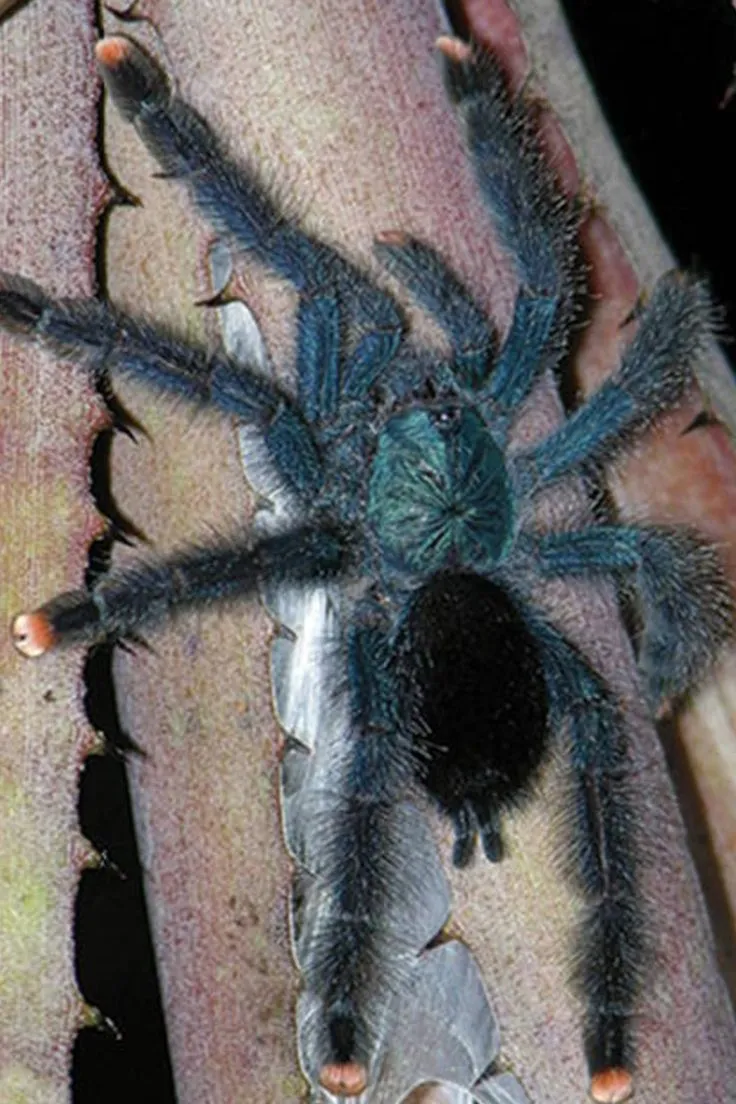
The enclosure should be appropriately sized for the tarantula’s life stage. A juvenile Pink Toe Tarantula can thrive in a smaller enclosure, such as a 8x8x12 inch terrarium. As the spider grows, a larger enclosure is necessary, with adult females benefiting from a 12x12x18 inch or larger terrarium. It’s essential the enclosure is taller than wide to accommodate their arboreal nature. The enclosure should also be well-ventilated to prevent the buildup of stagnant air and maintain proper humidity levels. Secure lids are a must to prevent escape, as Pink Toes are surprisingly quick and agile.
Substrate Selection
The substrate serves several purposes, including providing a surface for the tarantula to walk on, helping to maintain humidity, and offering a place for the spider to burrow if desired. A substrate mix that retains moisture while allowing for good drainage is ideal. Suitable options include a mix of coconut fiber, peat moss, and sphagnum moss. The substrate should be deep enough for the spider to comfortably burrow if it chooses, typically 2-4 inches deep. Avoid substrates with sharp edges or chemicals that could harm the tarantula.
Decorations and Hiding Places
Providing adequate hiding places is crucial for reducing stress and allowing the tarantula to feel secure. Cork bark, artificial plants, and sturdy branches are excellent choices. Arrange the decorations to mimic a natural environment, offering climbing opportunities and shaded areas. Ensure the decorations are securely placed to prevent them from falling and potentially injuring the tarantula. Artificial plants can also help with humidity control, as they can be misted with water.
Temperature and Humidity
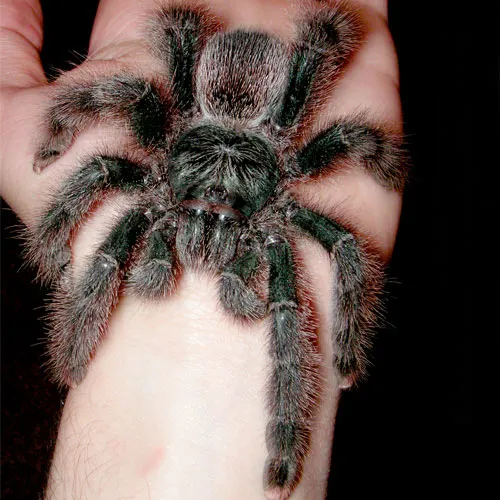
Pink Toe Tarantulas thrive in temperatures ranging from 75-85°F (24-29°C). A heat source, such as a low-wattage heat lamp or heat mat, can be used to maintain the appropriate temperature, but it’s important to avoid overheating the enclosure. Humidity levels should be maintained between 65-75%. This can be achieved by misting the enclosure with water 2-3 times a week, depending on the ventilation and substrate used. Regular monitoring with a hygrometer and thermometer is crucial to ensure the environmental parameters are within the ideal range.
Feeding and Hydration
Proper feeding and hydration are essential for the health and well-being of your Pink Toe Tarantula. A balanced diet and access to clean water will help your tarantula grow and thrive. The feeding frequency should be adjusted based on the tarantula’s age and size, and fresh water must always be accessible. Overfeeding can lead to health issues, while insufficient hydration can cause dehydration and molting problems. Provide a varied diet to ensure your tarantula receives all necessary nutrients.
Diet and Feeding Frequency
Pink Toe Tarantulas are insectivores and readily accept a variety of live insects. Crickets, roaches, mealworms, and other commercially available insects are all suitable options. The size of the prey should be appropriate for the tarantula’s size, generally no larger than the spider’s body. Juvenile tarantulas should be fed more frequently, such as 2-3 times a week, while adults can be fed once or twice a week. Remove any uneaten prey within 24 hours to prevent stress or harm to the tarantula.
Watering and Hydration
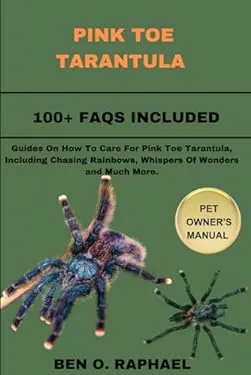
Providing a constant supply of fresh water is crucial. A shallow water dish, easily accessible and impossible for the tarantula to drown in, should always be available. Alternatively, you can mist the enclosure regularly, allowing the tarantula to drink droplets from the sides of the enclosure or from the decorations. The water dish should be cleaned and refilled regularly to prevent the growth of bacteria. Monitor your tarantula for signs of dehydration, such as a wrinkled abdomen, and adjust your watering schedule as needed.
Handling and Interaction
While Pink Toe Tarantulas are generally docile, handling them should be approached with caution. They are not typically handled frequently, as stress can be detrimental to their health. If handling is necessary, proper techniques and precautions are crucial. This section will cover safe handling practices and how to recognize and avoid stress. Remember that each tarantula has its own personality and preferences, and some may be more tolerant of handling than others.
Safe Handling Practices
If you choose to handle your Pink Toe Tarantula, it’s essential to do so safely. Handle them close to the ground, in case of a fall. Avoid sudden movements, and allow the tarantula to walk onto your hand rather than forcing it. Never try to grab the tarantula, as this can startle them and potentially lead to a bite. Always wash your hands before and after handling your tarantula. It’s also recommended to handle them over a soft surface, in case of an accidental drop.
Recognizing and Avoiding Stress
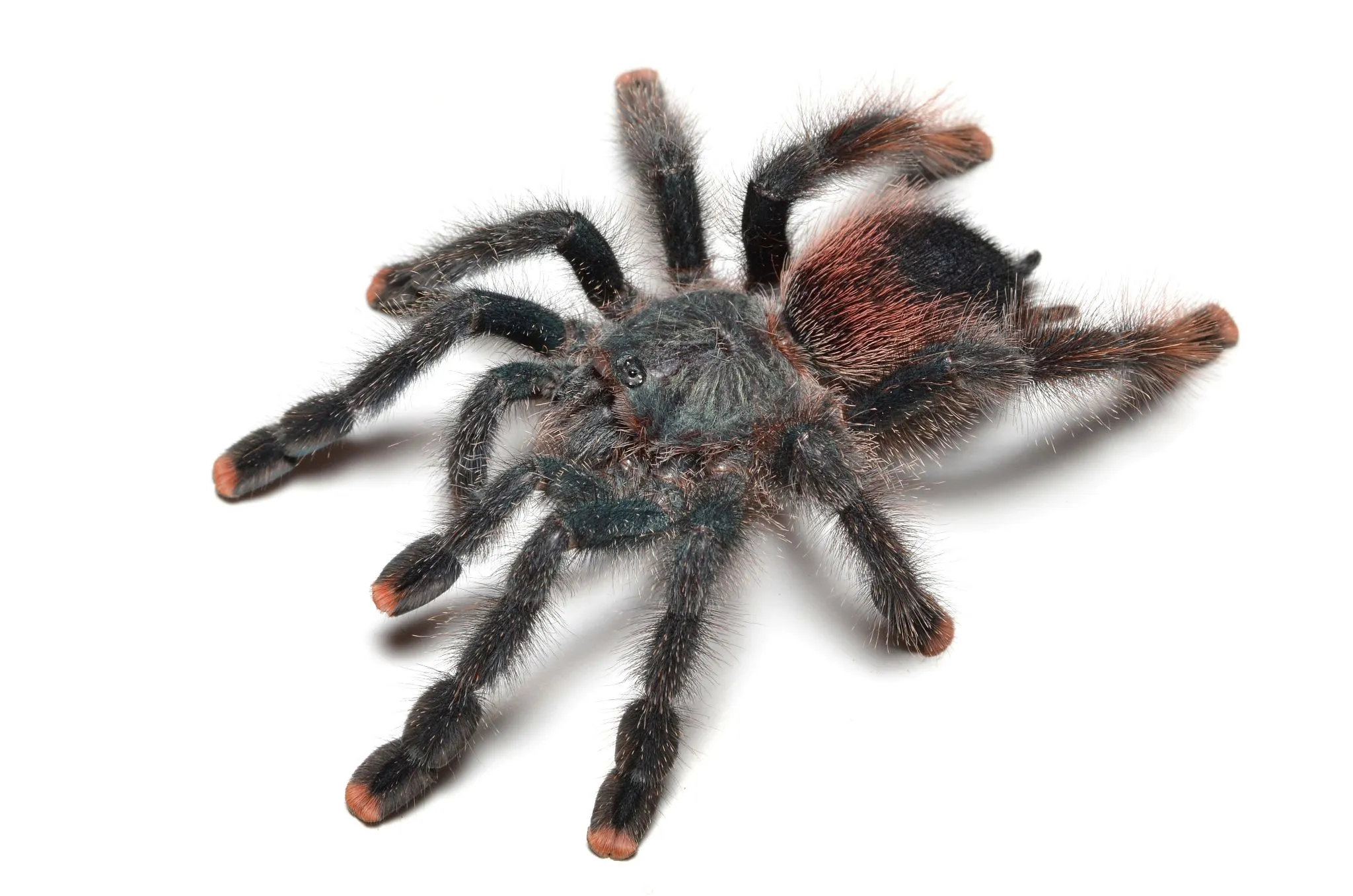
Tarantulas are easily stressed, and excessive stress can weaken their immune systems and lead to health problems. Signs of stress include erratic behavior, refusal to eat, or a defensive posture. Avoid sudden movements, loud noises, and other disturbances near the enclosure. Provide a secure, stable environment with plenty of hiding places. Minimize handling, and only handle when absolutely necessary. If your tarantula shows signs of stress, it’s best to leave them undisturbed and reassess their environment.
Health and Common Issues
Like all animals, Pink Toe Tarantulas can experience health problems. Understanding common issues, such as problems during molting and preventing diseases, is crucial. Providing a proper environment, diet, and care will minimize the risk of these problems. Regular observation of your tarantula will help you identify any potential health concerns early on, enabling prompt intervention and ensuring your spider’s well-being.
Shedding and Molting
Molting is a natural process where tarantulas shed their exoskeleton to grow. During this time, they are vulnerable and should not be disturbed. Before molting, the tarantula may stop eating and become less active. The process can take several hours, and the spider will remain in a vulnerable position. Do not feed or handle them during this period. Provide extra humidity to help the molting process. After molting, the spider’s new exoskeleton will be soft. It will harden over the following days. Avoid feeding until their fangs have fully hardened.
Common Diseases and Prevention
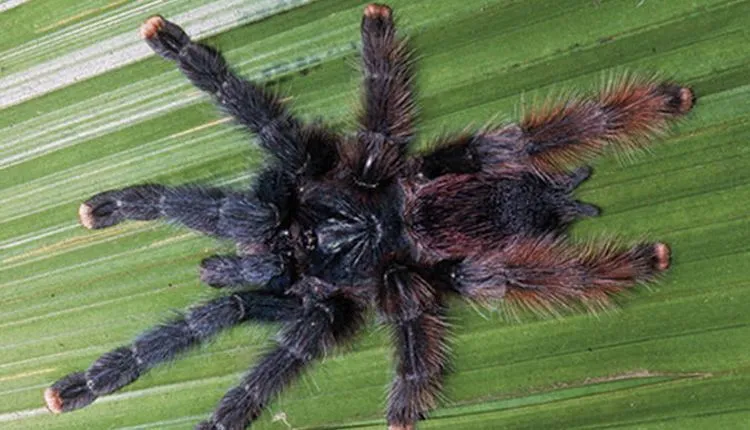
While Pink Toe Tarantulas are generally hardy, they can be susceptible to certain diseases. Common issues include fungal infections, parasites, and injuries. Maintaining a clean and appropriate environment is key to preventing illness. Regularly clean the enclosure, remove uneaten prey, and provide fresh water. If you notice any signs of illness, such as lethargy, loss of appetite, or unusual behavior, consult a veterinarian experienced in exotic animal care. Ensure the enclosure is well-ventilated to prevent fungal growth. Proper diet and care will significantly decrease the chances of your tarantula contracting any diseases.
Breeding and Reproduction
Breeding Pink Toe Tarantulas can be a rewarding experience, but it requires careful planning and preparation. The process involves understanding the sex of your tarantula, providing the right conditions, and caring for the egg sac and spiderlings. This section covers the key steps involved in breeding these fascinating creatures. Remember, breeding tarantulas is an advanced aspect of care, and it is recommended to have prior experience in tarantula keeping before attempting it.
Sexing Your Tarantula
Sexing a Pink Toe Tarantula can be done by examining their molt. After molting, the underside of the abdomen can be inspected. Females have a spermetheca (a receptacle for storing sperm) and a simple structure. Males, on the other hand, possess small hooks on their front legs, used for mating, and a more complex structure. This method requires experience, and it is recommended to seek help from an experienced breeder if unsure. Alternatively, you can use a microscope to examine the molt.
Mating and Egg Sac Care
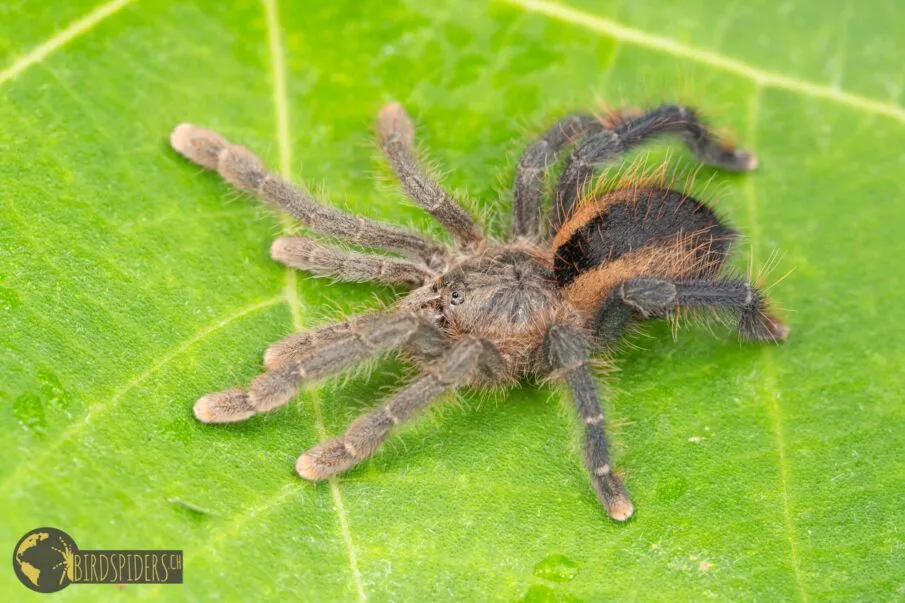
Mating Pink Toe Tarantulas requires introducing a mature male to a receptive female. The male will typically drum on the female’s enclosure to signal his presence. If the female is receptive, she will allow the male to mate. After mating, the female will lay eggs and create an egg sac. The egg sac must be carefully protected and maintained in the correct humidity and temperature. The female will often guard the egg sac. After the spiderlings hatch, they will require separate housing and specialized care. Providing correct temperature and humidity is vital to the success of this process.
Conclusion
Caring for a Pink Toe Tarantula can be a fulfilling experience. By providing the right environment, diet, and handling practices, you can ensure your tarantula thrives. This guide offers all of the information needed to care for your Pink Toe Tarantula and create the best life possible for it. Remember that responsible tarantula keeping involves continuous learning and observation. Always be prepared to adapt your care based on your tarantula’s individual needs and behaviors. With proper care, your Pink Toe Tarantula can become a fascinating and rewarding pet for years to come.
